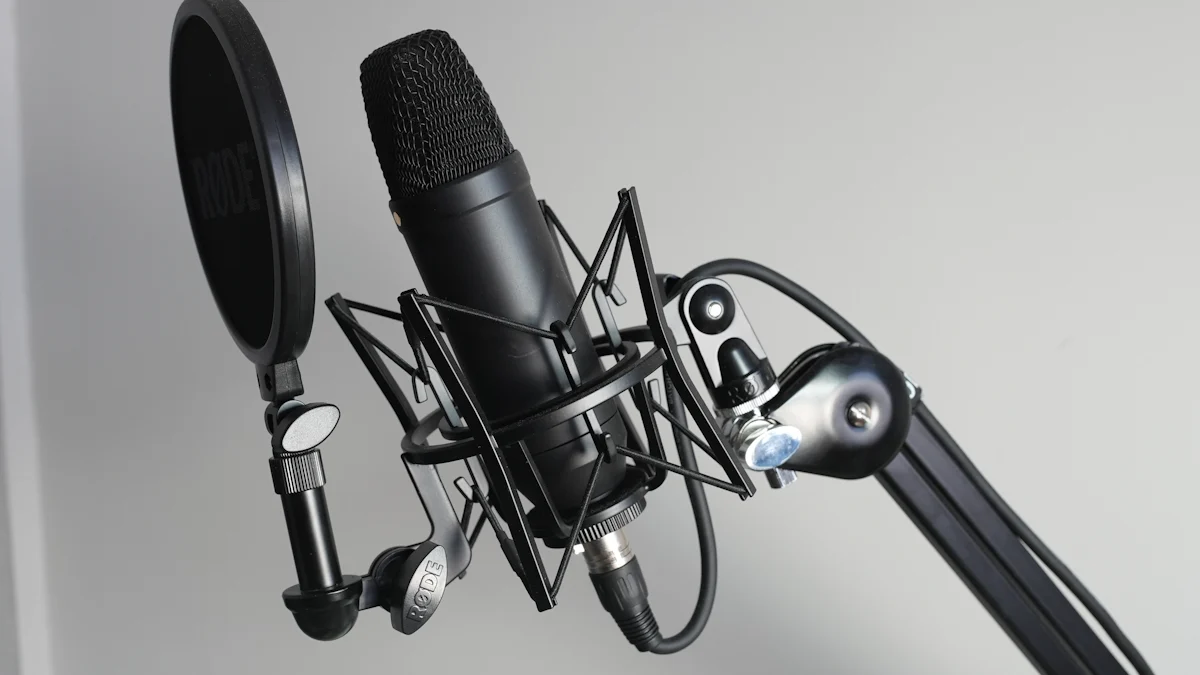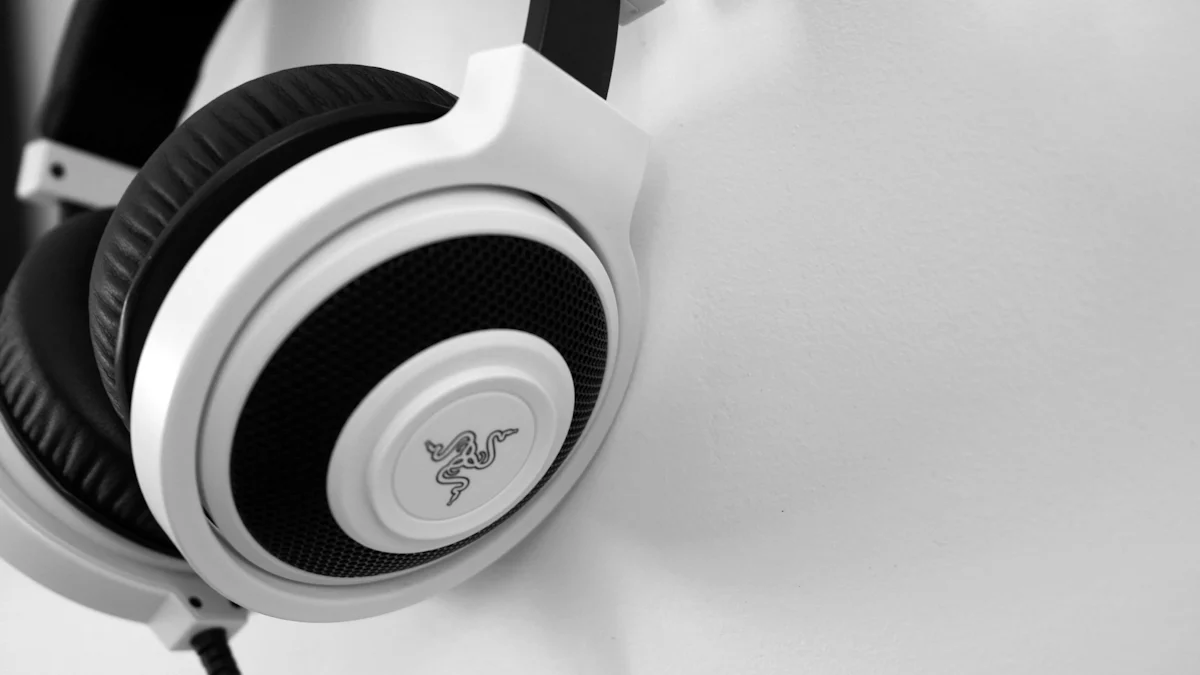Enhance Your Meeting Audio with These Simple Tips

In today's world of virtual meetings, audio quality plays a crucial role in ensuring effective communication. Poor sound quality can disrupt your virtual presence, leading to misunderstandings and decreased productivity. Imagine trying to focus during video calls while dealing with audio lags, echoes, or background noise. These common issues can make it difficult to engage fully and contribute meaningfully. Fortunately, you can enhance your audio and video experience with simple audio solutions. By following practical tips and using the best headphones for virtual meetings, you can significantly improve your audio quality and make your video conferencing sessions more productive.
Key Takeaways
- Invest in quality microphones and headphones to significantly enhance your audio clarity during virtual meetings.
- Optimize your audio settings in meeting platforms like Zoom by adjusting volume control and enabling noise suppression features.
- Improve your meeting environment by using soft furnishings and acoustic panels to reduce echoes and enhance sound quality.
- Minimize background noise by closing windows and doors, and consider scheduling meetings during quieter times.
- Regularly update your audio drivers and test your equipment before meetings to ensure optimal performance.
- Use headphones instead of speakers to prevent echo and improve sound isolation for clearer communication.
- If persistent audio issues arise, don't hesitate to seek professional help for advanced troubleshooting and setup optimization.
Selecting the Best Equipment for Virtual Meetings

Choosing the right equipment can greatly enhance your virtual presence during video calls. The right tools ensure clear communication and help you avoid common audio issues. Let's explore the essential equipment you need for a successful video meeting setup.
Microphones
A quality microphone is crucial for clear audio in virtual meetings. It captures your voice accurately, ensuring that others hear you without distortion or background noise.
Types of microphones suitable for virtual meetings
- USB Microphones: These are easy to use and connect directly to your computer. They offer good sound quality and are ideal for most virtual meetings.
- Lavalier Microphones: Also known as lapel mics, these are small and clip onto your clothing. They are perfect for hands-free communication.
- Condenser Microphones: Known for their sensitivity and wide frequency response, these are great for capturing detailed audio.
- Dynamic Microphones: These are durable and handle high sound pressure levels well, making them suitable for noisy environments.
Tips for selecting a quality microphone
- Look for a microphone with noise-canceling features to minimize background noise.
- Consider the microphone's frequency response to ensure it captures a wide range of sounds.
- Choose a microphone with a cardioid pickup pattern to focus on your voice and reduce ambient noise.
- Test the microphone before purchasing to ensure it meets your audio quality expectations.
Best Headphones for Virtual Meetings
Using headphones during virtual meetings offers several advantages over speakers. They provide better sound isolation and prevent echo, ensuring you hear every word clearly.
Benefits of using headphones over speakers
- Noise Isolation: Headphones block out external noise, allowing you to focus on the meeting.
- Echo Reduction: They prevent sound from your speakers from being picked up by your microphone, reducing echo.
- Improved Audio Quality: Headphones deliver clearer sound, making it easier to understand participants.
Features to look for in headphones
- Noise-Canceling Technology: This feature helps eliminate background noise, enhancing your listening experience.
- Comfortable Design: Look for headphones that are comfortable to wear for extended periods, such as the Poly Voyager Focus 2 Wireless Noise Cancelling On-Ear Headset.
- Built-in Microphone: A headset with a built-in mic, like the Logitech Zone 750 Wired Noise Canceling On-Ear Headset, ensures clear communication.
- Wireless Connectivity: Wireless headphones offer more freedom of movement during meetings.
Investing in the best headphones for virtual meetings, such as the Poly Voyager Legend Wireless Noise Cancelling Bluetooth Headset, can significantly improve your audio experience. These devices provide exceptional sound quality and comfort, making them ideal for long video conferencing sessions.
Optimizing Audio Settings for Better Audio Quality
Enhancing your audio quality in virtual meetings involves more than just selecting the right equipment. You must also optimize your audio settings to ensure clear and uninterrupted communication. Let's explore how you can adjust both software and system settings to achieve the best sound quality.
Software Configurations
Adjusting audio settings in popular meeting platforms
To optimize your audio, start by adjusting the settings in your virtual meeting software. Platforms like Zoom offer various options to enhance audio clarity. Access the audio settings menu and explore features such as volume control and microphone sensitivity. Adjust these settings to suit your environment and ensure your voice is heard clearly.
Using noise suppression and echo cancellation features
Noise-suppression features and echo cancellation are essential for maintaining high audio quality. These tools help eliminate background noise and prevent echoes during meetings. Most virtual meeting platforms, including Zoom, provide these features. Enable them to reduce distractions and improve the overall audio experience. According to research on Digital signal processing techniques, these methods effectively modify the spectral balance in audio signals, enhancing clarity.
System Settings
Ensuring your computer's audio settings are optimized
Your computer's audio settings play a crucial role in maintaining sound quality. Check your system's audio settings to ensure they are configured correctly. Adjust the input and output levels to match your microphone and headphones. This step helps prevent distortion and ensures clear communication during virtual meetings.
Updating audio drivers for better performance
Keeping your audio drivers up to date is vital for optimal performance. Outdated drivers can lead to poor audio quality and connectivity issues. Regularly update your drivers to benefit from the latest enhancements and fixes. This simple step can significantly improve your zoom audio quality and ensure a seamless virtual meeting experience.
By following these tips, you can optimize your audio settings and enhance your virtual meeting experience. Implementing these changes will lead to clearer communication and more productive interactions.
Addressing Environmental Factors to Improve Audio Quality

Enhancing audio quality in virtual meetings involves more than just equipment and settings. The environment where you conduct your meetings plays a significant role. By addressing environmental factors, you can further improve the clarity and effectiveness of your communication.
Room Acoustics
Importance of room acoustics in audio quality
Room acoustics significantly impact the sound quality during virtual meetings. Poor acoustics can lead to echoes and reverberations, making it difficult for participants to hear clearly. Understanding the difference between sound absorption and soundproofing is crucial. While soundproofing aims to block external noise, sound absorption focuses on improving the internal acoustics by reducing echoes and enhancing speech intelligibility.
Simple ways to improve room acoustics
Improving room acoustics doesn't require a complete overhaul. Here are some simple tips:
- Use Soft Furnishings: Incorporate rugs, curtains, and cushions to absorb sound waves and reduce echoes.
- Add Acoustic Panels: Install panels on walls or ceilings to enhance sound absorption.
- Rearrange Furniture: Position furniture strategically to break up sound paths and minimize reverberation.
These adjustments can create a more acoustically friendly environment, ensuring clearer audio during your virtual meeting.
Minimizing Background Noise
Identifying common sources of noise
Background noise can disrupt virtual meetings, making it hard for participants to focus. Common sources include traffic sounds, household appliances, and even conversations in adjacent rooms. Identifying these sources is the first step toward effective noise removal.
Tips for reducing noise during meetings
To minimize background noise, consider the following strategies:
- Close Windows and Doors: This simple action can significantly reduce external noise.
- Use AI-Powered Noise-Cancellation Tools: These tools can automatically filter out unwanted sounds, providing a cleaner audio experience.
- Schedule Meetings During Quiet Times: Choose times when your environment is naturally quieter to avoid disturbances.
Implementing these noise removal techniques will help maintain a professional and distraction-free atmosphere during your virtual meetings.
Troubleshooting Common Audio Issues in Virtual Meetings
In virtual meetings, audio problems can disrupt communication and hinder productivity. Identifying and resolving these issues quickly is crucial for maintaining seamless interactions. Let's explore common audio problems and effective solutions to ensure your virtual meeting experience remains smooth and productive.
Identifying Audio Problems
Common audio issues in virtual meetings
During virtual meetings, you might encounter several audio issues. These can include:
- Echoes: When sound from your speakers re-enters your microphone, creating a feedback loop.
- Background Noise: Unwanted sounds that interfere with the clarity of your speech.
- Audio Lag: Delays between when you speak and when others hear you.
- Distorted Sound: Poor audio quality that makes it difficult to understand participants.
Recognizing these issues early can help you address them before they disrupt your meeting.
How to diagnose audio problems quickly
To diagnose audio problems efficiently, follow these steps:
- Test Your Audio: Before joining a meeting, test your audio settings. Most platforms offer a test feature to check your microphone and speakers.
- Check Connections: Ensure all cables and connections are secure. Loose connections can cause audio disruptions.
- Monitor System Resources: High CPU usage can affect audio performance. Close unnecessary applications to free up resources.
- Listen for Feedback: Pay attention to any feedback or echoes during the meeting. Adjust your microphone or speaker settings if needed.
By following these tips, you can quickly identify and address audio issues, ensuring a smoother virtual meeting experience.
Solutions and Fixes
Step-by-step solutions for common issues
Here are some practical audio solutions for common problems:
- Echoes: Use headphones instead of speakers to prevent sound from re-entering your microphone. Adjust the microphone sensitivity settings to reduce feedback.
- Background Noise: Enable noise suppression features in your meeting software. Consider using a noise-canceling microphone for better clarity.
- Audio Lag: Improve your internet connection by using a wired connection instead of Wi-Fi. Close bandwidth-heavy applications to reduce lag.
- Distorted Sound: Update your audio drivers regularly. Ensure your microphone and speakers are compatible with your system.
Implementing these solutions can significantly enhance your audio quality during virtual meetings.
When to seek professional help
Sometimes, despite your best efforts, audio issues persist. In such cases, seeking professional help may be necessary. Consider consulting an audio engineer if:
- You experience persistent audio problems that you cannot resolve.
- Your equipment requires advanced configuration or repair.
- You need expert advice on optimizing your audio setup for professional use.
Professionals possess the technical skills and knowledge to address complex audio challenges, ensuring your virtual meetings run smoothly.
Improving your audio quality in virtual meetings is crucial for effective communication. By applying these simple tips, you can ensure that your voice is heard clearly and that you understand others without difficulty. High-quality sound equipment enhances intelligibility and boosts your credibility. Studies show that good audio quality directly impacts how others perceive you. Implementing these strategies will lead to more productive and engaging meetings. Remember, investing in better audio not only improves your virtual presence but also enhances the overall effectiveness of your interactions.
FAQ
How can I improve Zoom audio quality?
To enhance your Zoom audio quality, start by investing in high-quality audio devices like an external microphone and an audio interface. These tools capture sound more accurately. Next, optimize Zoom's sound settings to match your equipment. Disable any automatic audio correction features in the software, as they might interfere with the clarity of your sound.
What type of microphone is best for virtual meetings?
For virtual meetings, USB microphones are a popular choice due to their ease of use and good sound quality. Lavalier microphones offer hands-free convenience, while condenser microphones provide detailed audio capture. Choose a microphone that suits your environment and communication needs.
Why should I use headphones during virtual meetings?
Headphones offer several benefits over speakers in virtual meetings. They provide noise isolation, reducing external distractions. Headphones also prevent echo by ensuring that sound from your speakers doesn't re-enter your microphone. This results in clearer communication.
How do I minimize background noise during a virtual meeting?
To reduce background noise, close windows and doors to block external sounds. Use AI-powered noise-cancellation tools to filter out unwanted noise. Scheduling meetings during quieter times can also help maintain a professional atmosphere.
What should I do if I experience audio lag in a virtual meeting?
Audio lag often results from a poor internet connection. To reduce lag, use a wired connection instead of Wi-Fi. Close bandwidth-heavy applications to free up resources. These steps can help maintain smooth audio transmission.
How can I improve room acoustics for better audio quality?
Enhance room acoustics by using soft furnishings like rugs and curtains to absorb sound waves. Adding acoustic panels to walls or ceilings can further improve sound absorption. Rearranging furniture to break up sound paths can also reduce echoes.
What are common audio issues in virtual meetings?
Common audio issues include echoes, background noise, audio lag, and distorted sound. Identifying these problems early allows you to address them before they disrupt your meeting.
When should I seek professional help for audio issues?
Consider consulting an audio engineer if you experience persistent audio problems that you cannot resolve. Professionals can provide expert advice on optimizing your audio setup and address complex challenges.
See Also
Key Strategies for Effective Video Conference Hosting
Expert Tips for Running a Hybrid Zoom Meeting
Comprehensive Guide to Enhancing Computer Audio Visuals
